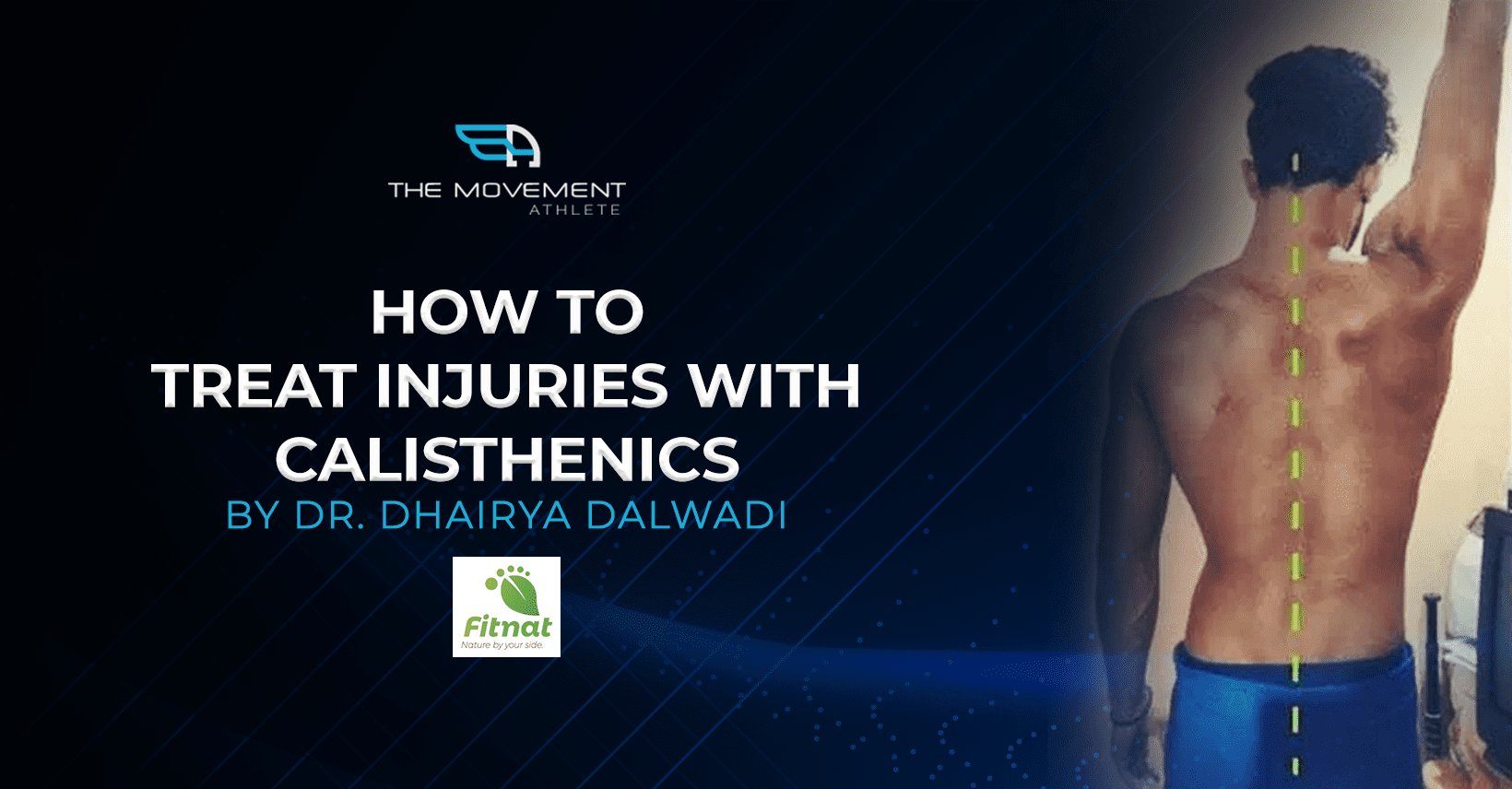

🚨 STOP MASKING SYMPTOMS • START FIXING ROOT CAUSES
The Pain-Free Revolution:
How Natural Movement Eliminates Chronic Pain Forever
Discover the breakthrough treatment method that’s helping thousands avoid surgery, eliminate dysfunction, and build bulletproof bodies using only natural movement
⚡ LIMITED TIME: Professional Assessment Usually $97, FREE Today
✅ Takes 3 minutes • ✅ No credit card • ✅ Instant personalized results
📖 8 min read • 🎯 All fitness levels • 📅 Updated January 2025 • ⭐ Trusted by 100,000+ athletes
Are You Trapped in the Pain Cycle?
Every day, millions of people follow this destructive pattern:
😣 Feel Pain → 💊 Take Pills → 😌 Temporary Relief → 😣 Pain Returns Worse
Sound familiar? This cycle never addresses the ROOT CAUSE of your pain.
There’s a Better Way
Dr. Dhairya’s revolutionary approach has helped thousands break free from chronic pain using natural movement that treats the cause, not just symptoms.
🏆 Join 100,000+ People Who Chose Natural Healing
Real people using calisthenics to eliminate chronic pain, avoid surgery, build incredible strength, and live pain-free lives.
What Is Calisthenics? Understanding Natural Movement
Hello everyone! I am Dr. Dhairya (The+E+Rya), chief physical therapist and founder of Fitnat. If you can’t pronounce my name, just call me Dr. Deprogrammer. I have been using calisthenics to treat all my patients from teenage to geriatric age!
I’m going to share with you how and why I provide treatment without any equipment, tools, machines, or passive modalities. As I was myself inspired by calisthenics, I thought – why can’t I practice it in my treatments? And it worked incredibly well.
💡 Pro Tip: Calisthenics is natural movement – movements we’re born with like rolling, crawling, lunging, getting up, walking, jumping, and running. Think of natural movements as software inside us that developed with our growth.
When patients visit me and hear my introduction, the usual response I get is:
😲 “WOAH! YOU DON’T USE ANY EQUIPMENT? WHAT IS CALISTHENICS?”
When I make patients move naturally, their primal brain activates because natural movement is an innate software within us. The nervous system enhances self-healing, and I use calisthenics to:
- Improve dysfunctions
- Treat pain
- Prevent injuries
⚡ BREAKTHROUGH METHOD ⚡
Discover What’s REALLY Causing Your Pain
Get your personalized dysfunction analysis and the exact exercise plan to eliminate pain at the source – not just mask symptoms
✅ 3-minute assessment • ✅ Instant results • ✅ 100% free
⏰ Join 847 people who started their assessment today
Understanding Pain, Injury, and Dysfunction: The Iceberg Principle
“What’s the difference between pain, injury, and dysfunction? Aren’t they all the same?” This is a critical question that determines how effectively you can treat and prevent problems.
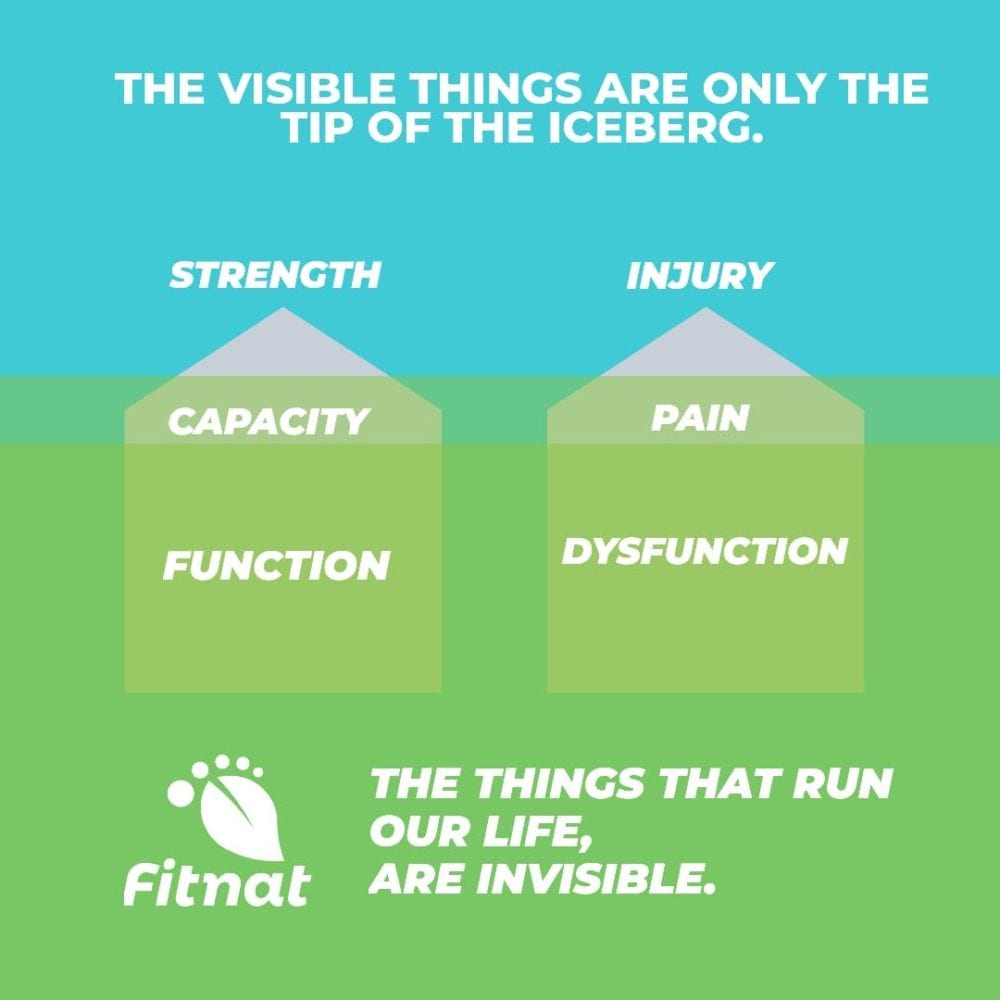
As you can see in the iceberg image, pain and injuries are just the tip. The underlying major part is “dysfunction.”
| Term | Definition | Example |
|---|---|---|
| Dysfunction | When a body part/system doesn’t act naturally or diverts from its natural function | Digestive muscles allowing food to come up instead of going down |
| Injury | Physical/mental damage when body experiences force greater than its capacity | Muscle tear, dislocation, external trauma from accidents |
| Pain | Unpleasant signals when brain ASSUMES presence of growing dysfunction | Warning signal requesting change before injury occurs |
👉 What Is Dysfunction?
“Dysfunction means when a part/group of things in your body is not acting naturally or is diverted from its natural function” – thus the term Dys+function (disturbed function).
👉 Understanding Pain Signals
Pain is NOT the dysfunction. Pain is the LAST thing you feel. Before pain, your body gives warning signals like:
- 🙁 Tightness/stiffness in movement
- 🙁 Decreased balance
- 🙁 Improper coordination
- 🙁 Inability to breathe well in positions
- 🙁 Cramps during movement
- 🙁 Numbness
🎯 Key Takeaway: Pain is your body’s request for CHANGE. It’s not your enemy – it’s a messenger telling you that dysfunction is growing and needs attention before injury occurs.
The Mistake People Make When Treating Pain
We need massive awareness and correct education when it comes to pain and injuries. Most people have these harmful thoughts when experiencing pain:
- 👎 Pain is a bad thing
- 👎 I need to kill the pain
- 👎 My treatment is done when pain is gone
- 👎 I should take pain relief drugs as much as possible
⚠️ Common Mistake: People think pain is their enemy and opt for passive treatments. This reduces pain but NEVER treats the underlying dysfunction.
| Treatment Type | Examples | Pain Relief | Dysfunction Treatment | Long-term Results |
|---|---|---|---|---|
| Passive | Electrotherapy, TheraGun, Trigger Point | ✅ Yes | ❌ No | ❌ Poor |
| Active (Calisthenics) | Natural movement, progressive exercises | ✅ Yes | ✅ Yes | ✅ Excellent |
Active treatment rewards you with MORE than just pain reduction:
- Makes you feel stronger and confident in movement
- Makes you resistant to previous dysfunction
- Reduces likelihood of same type of injury
- Improves overall movement quality
100,000+
Pain-Free Athletes
97%
Success Rate
$0
Equipment Needed
Why Choose Active Recovery Over Passive Treatment?
✅ Treats root cause instead of masking symptoms
✅ Builds bulletproof strength that prevents future injuries
✅ Zero side effects – only positive health benefits
✅ Costs nothing – no expensive equipment or therapy sessions
🔥 TRANSFORMATION ZONE 🔥
Ready To Transform Your Body Into a Pain-Free Powerhouse?
🎯
Eliminate Pain at the Source
💪
Build Bulletproof Strength
🎆
Live Your Best Life
Join 100,000+ people who chose natural movement over pills, surgery, and expensive therapy
✅ 100% Free Assessment • ✅ Instant Results • ✅ No Equipment Needed
⏰ 279 people started their assessment in the last 24 hours
Why Calisthenics Is The Perfect Solution for Treating Pain 💯
Upon understanding the differences above and being aware that treating dysfunction prevents and treats injuries, let’s tackle why choose calisthenics over other forms of rehab?
1. 🎯 Calisthenics teaches functional movement
Calisthenics movements are natural, not artificial like gym machines. By practicing regular calisthenics, you maintain healthy functional capacity and progressively increase joint strength.
2. 😊 Highly modifiable for any person
Calisthenics has countless variables. One exercise can be taught many ways depending on capacity, age, or injury factors:
- Children: Pushing movements through crawling
- Athletes: Pushing movements through push-ups
- Seniors: Pushing movements through wall pushes
3. 😊 Endless progressions available
Difficulty can be adjusted by leveraging gravity and weight distribution. For knee bending:
- Easiest: Lying bent knee raises (gravity minimized)
- Moderate: Crawling movements (some gravity)
- Advanced: Squats (full gravity resistance)
4. 😊 Accommodates all rehab principles
- ✅ Joint distraction: Hanging exercises for spinal decompression
- ✅ Proprioception: Balance and position sense training
- ✅ Sensory input: Mind-to-muscle connection development
5. 😊 Calisthenics is FUN
Hands down, calisthenics is the most interesting movement training system. It keeps rehabilitation engaging and non-boring through game-like progressions.
Real Case Studies: Pain × Dysfunction 🩺
👨🏫 Case 1: Shoulder Pain Featuring Scoliosis
Brief: Advanced calisthenics athlete developed LEFT shoulder pain gradually over 6 months, despite 4 years of training experience.
Assessment: Shoulder joint examination was surprisingly normal despite being the pain site. Spinal examination revealed scoliosis – abnormal spinal curve. Despite spinal dysfunction, there was NO spinal pain!
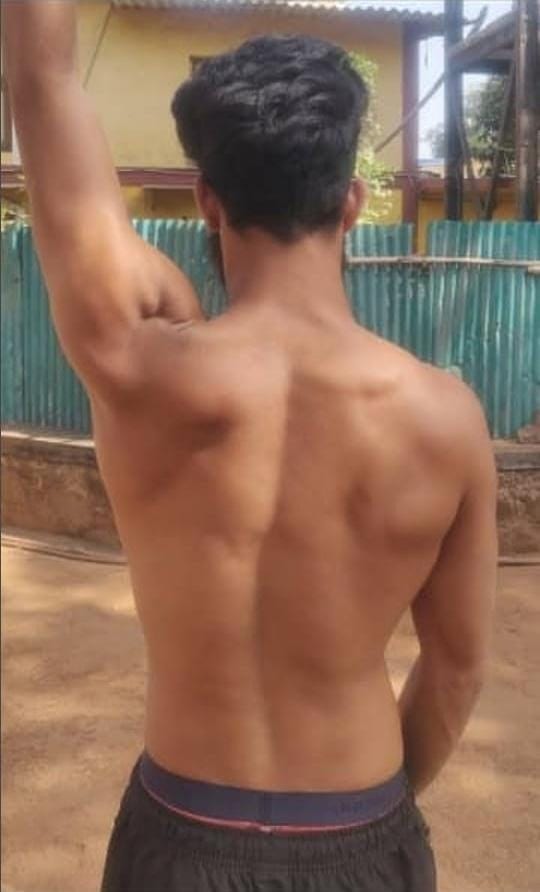
Treatment: We used the athlete’s favorite strong movement – ONE ARM Handstand on the right side to address the spinal dysfunction.
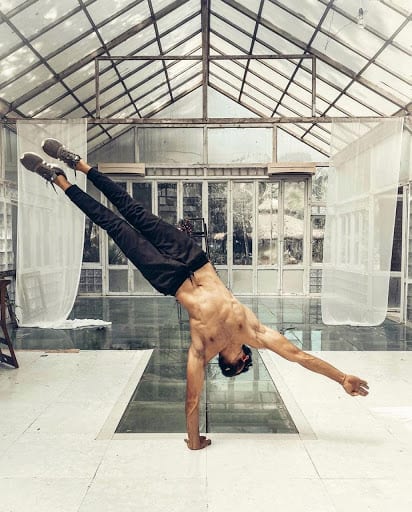
Result: Complete spinal dysfunction correction and total shoulder pain elimination – without X-rays, pain pills, or passive treatments!
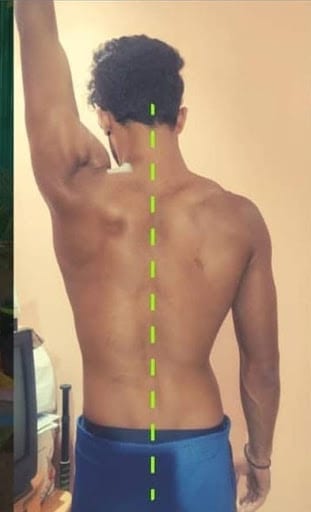
👨🏫 Case 2: Lower Back Pain During Squats
Brief: 21-year-old beginner developed moderate lower back pain over 3 months. Pain occurs during squat practice. Student sits 9+ hours daily.
Assessment: Excellent squat mechanics with good range of motion in hips, knees, and ankles. Spine alignment appeared normal. The issue: prolonged sitting created compressive forces affecting spinal health during squats.
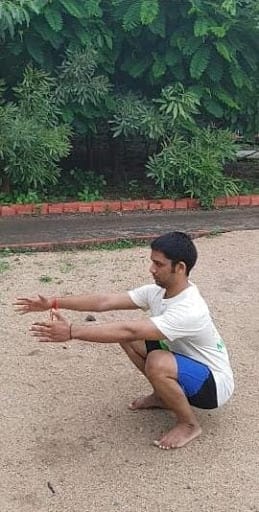
Treatment: Spinal decompression using Hanging Knee Raises. Notice how joint positions in hanging knee raises mirror squats, but with spinal decompression instead of compression.
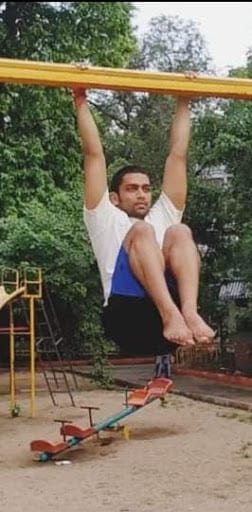
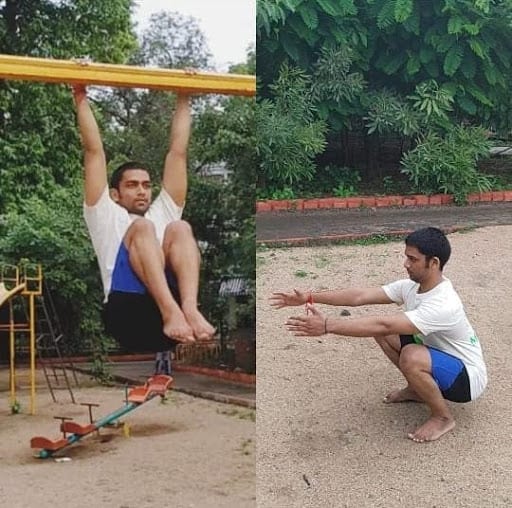
Result: Complete pain elimination during squats plus improved overall strength, stability, and capacity. We also addressed lifestyle factors through work position modifications.
⚠️ Important Note: If he had treated back pain with painkillers, he would likely have developed disc problems. By treating the movement dysfunction, he solved the root cause.
👨🏫 Case 3: Chest Pain During Overhead Press
Brief: Desk worker developed mild chest pain during gym overhead press after one year of sedentary lifestyle.
Assessment: Notice the key sign – difficulty breathing during overhead press even with just the barbell. Inability to breathe in certain positions indicates poor core stabilization.
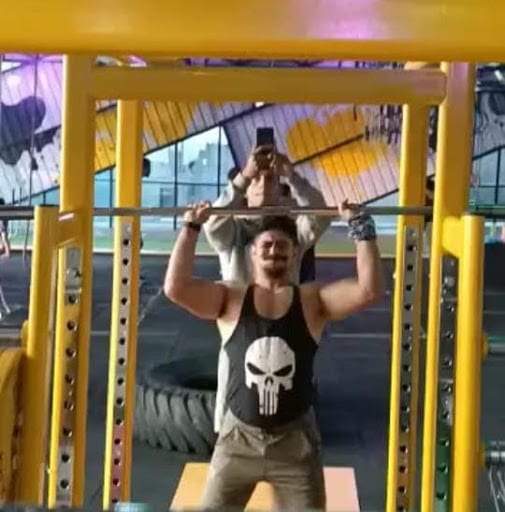
When core isn’t stabilized, shallow chest breathing overworks pectoral muscles, causing strain and pain.
Treatment: Eccentric Trunk Extension (Controlled Back Bending) to improve core stability and breathing patterns.
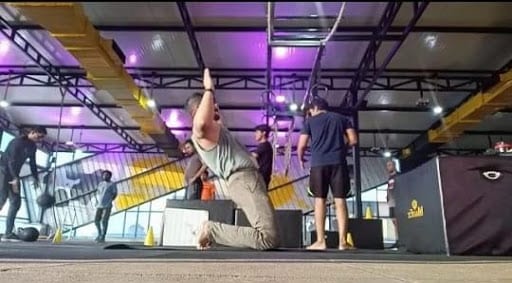
🚀 Ready To Build Your Pain-Free Body?
Get your personalized movement assessment and discover the exact progressions to eliminate dysfunction while building bulletproof strength.
✅ Immediate results • ✅ No expensive equipment needed • ✅ Works for all ages
👆 Key Principle: Examine The Whole Body
It’s like solving a murder mystery where we must consider everyone connected to the victim. Your body is one single structure with everything connected inside it. We can’t treat pain by ONLY working on the pain site.
I hope you now understand that calisthenics can provide comprehensive rehabilitation. I have prevented complex surgeries and costly treatments for:
- Ligament tears
- Scoliosis
- Osteoarthritis
- Fibromyalgia
- Various other conditions
All using pure calisthenics movements and principles.
| Treatment Phase | Timeline | What to Expect | Focus Areas |
|---|---|---|---|
| Assessment | Week 1 | Identify dysfunction patterns | Root cause analysis |
| Foundation | Weeks 2-4 | Pain reduction, movement improvement | Basic movement patterns |
| Strengthening | Weeks 5-8 | Increased stability and strength | Progressive loading |
| Integration | Weeks 9-12 | Return to full activities | Functional movement, prevention |
About The Movement Athlete
The Movement Athlete is the world’s most advanced calisthenics training platform, trusted by over 100,000 athletes in 80+ countries. Our AI-powered system creates personalized workout plans that adapt to your progress daily.
What sets us apart is our focus on injury prevention and rehabilitation. Like Dr. Dhairya’s approach, we believe in treating the root cause through natural movement rather than masking symptoms.
From injury recovery to advanced skill mastery, we provide the exact roadmap you need to build strength safely and effectively – no guesswork, just results.
Frequently Asked Questions
Can calisthenics really treat serious injuries?
Yes! As demonstrated in the case studies, calisthenics addresses dysfunction at the root level. By using natural movement patterns and progressive loading, it can effectively treat conditions like scoliosis, chronic pain, and movement dysfunctions that often lead to injury.
How long does it take to see results with calisthenics rehabilitation?
Results vary by individual and condition severity, but many patients experience pain reduction within 1-2 weeks and significant improvement within 4-6 weeks. The key is consistency and proper progression based on your specific dysfunction patterns.
Is calisthenics safe for older adults or people with chronic conditions?
Absolutely! One of calisthenics’ greatest strengths is its adaptability. Exercises can be modified for any fitness level, age, or physical limitation. From wall pushes to advanced skills, there’s always an appropriate progression.
Do I need equipment for calisthenics rehabilitation?
No equipment is required! Calisthenics uses your body weight and gravity for resistance. At most, you might use a wall, floor, or pull-up bar, but most rehabilitation exercises can be done anywhere with just your body.
Should I stop other treatments if I start calisthenics rehabilitation?
Always consult with your healthcare provider before making changes to your treatment plan. Calisthenics can often complement other treatments, but your medical team should guide decisions about modifying or discontinuing existing therapies.
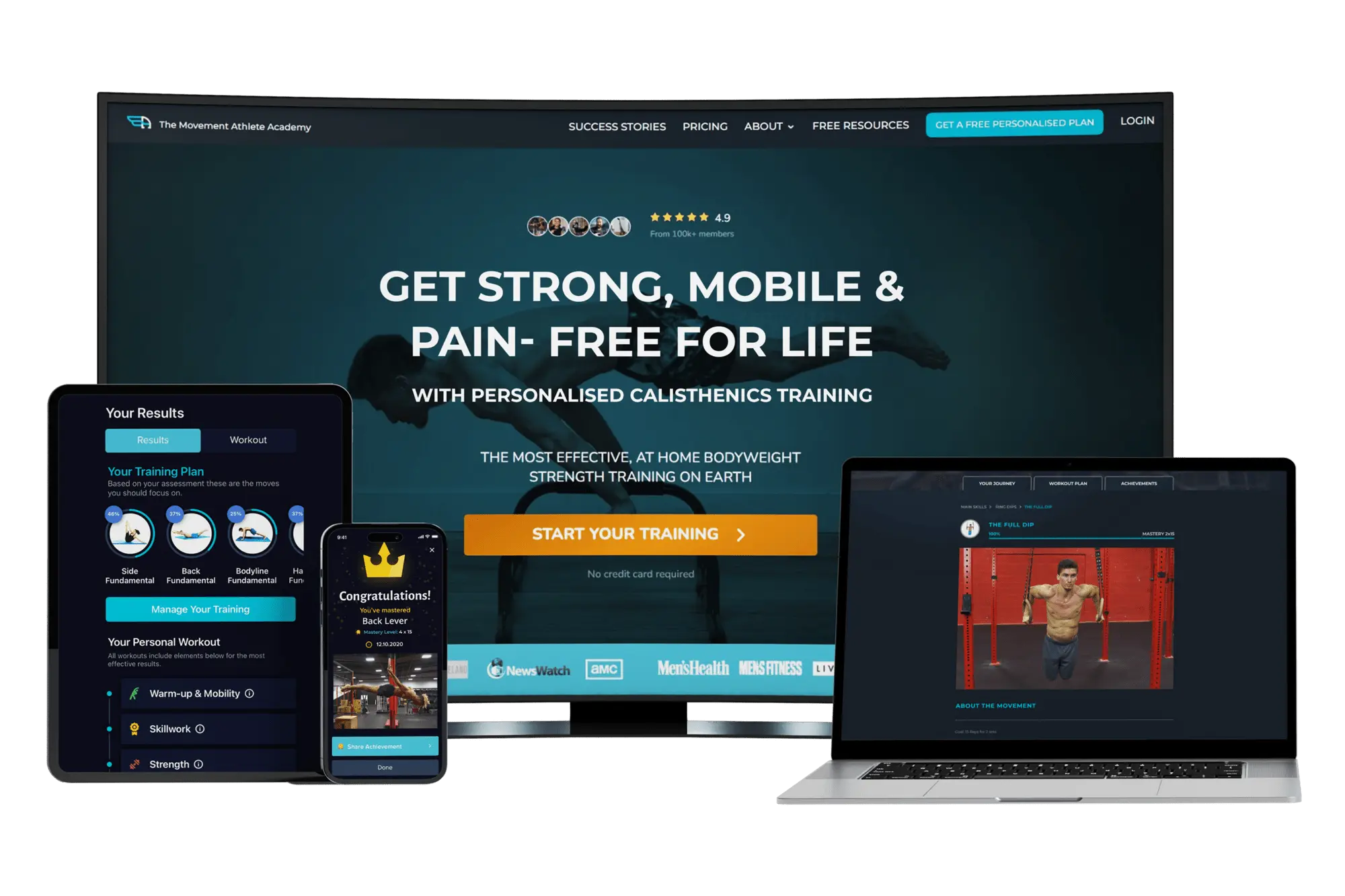
🔥 Limited Time: Free Movement Assessment Worth $97
Still Living With Pain That Never Fully Goes Away?
Discover the Natural Movement System That Eliminates Pain at the Source – Not Just the Symptoms
⭐⭐⭐⭐⭐ Join 100,000+ people who eliminated chronic pain without pills, surgery, or expensive therapy
✅ Personalized assessment reveals your hidden dysfunctions
✅ Custom exercise plan that treats root causes
✅ Prevent future injuries while eliminating current pain
✅ Build bulletproof strength using only natural movement
✅ Works for any age or fitness level
No credit card required • 5-minute assessment • 30-day money-back guarantee
“I avoided $15,000 back surgery using these techniques. The pain that haunted me for years is completely gone!”
– Michael R., 47, Construction Worker
“After 5 years of PT and countless treatments, this method finally gave me my life back. No more chronic shoulder pain!”
– Jennifer L., 39, Office Manager
“My knee problems disappeared in 6 weeks. Now I’m doing movements I never thought possible at my age!”
– David K., 52, Former Runner